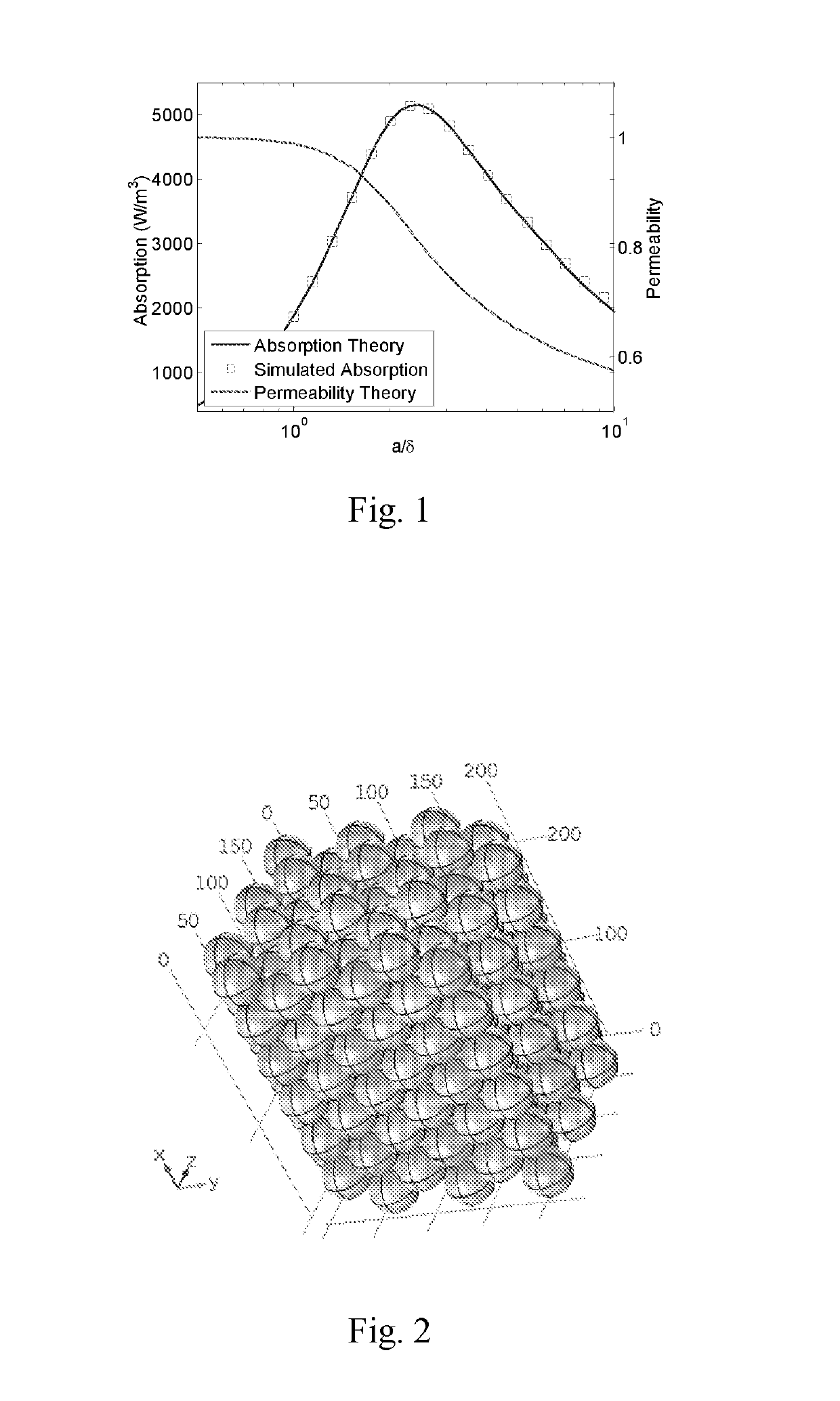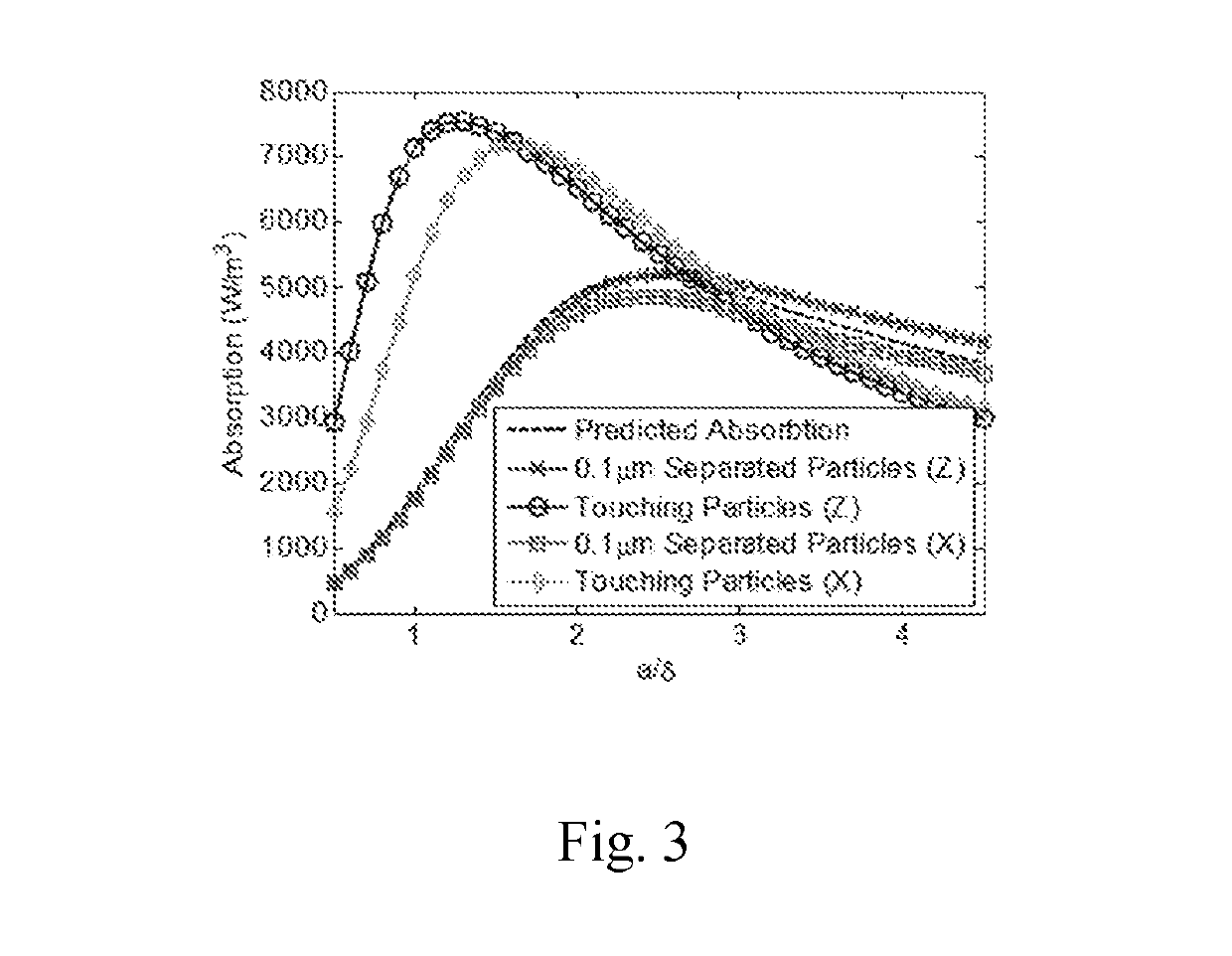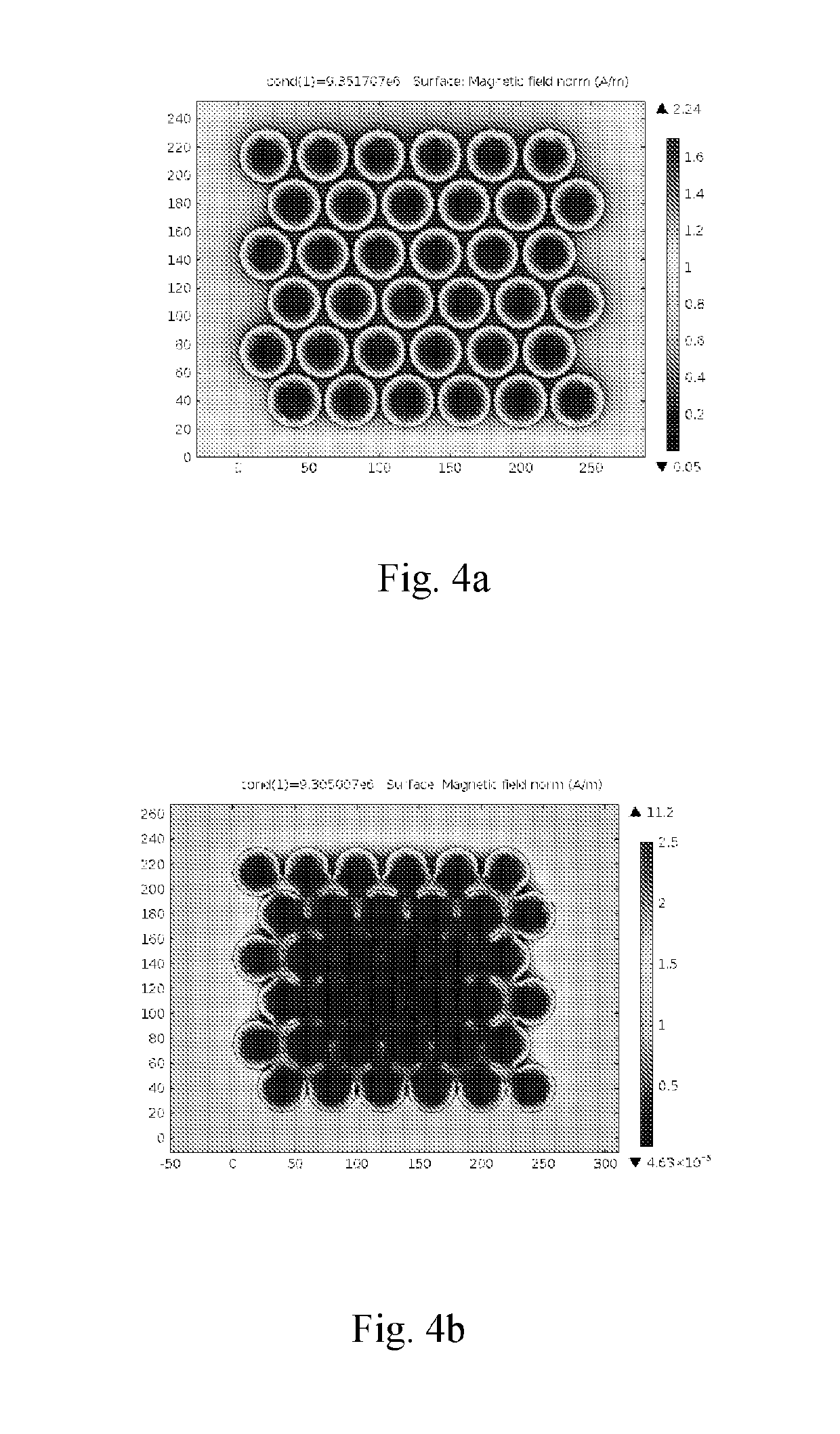A particle size sensor for metallic powders
a technology of metallic powder and particle size sensor, which is applied in the direction of particle size analysis, measurement devices, instruments, etc., can solve the problems of difficult to accurately determine other powder characteristics, difficult to determine the particle size distribution of powdered materials, and high cost of the process
- Summary
- Abstract
- Description
- Claims
- Application Information
AI Technical Summary
Benefits of technology
Problems solved by technology
Method used
Image
Examples
example
[0065]Theoretical Considerations and Simulation
[0066]The complex magnetic dipole moment for an individual spherical particle is derived as2
m=2πa3H0((μ+2)(1-kacot(ka)-μ(ka)2)(μ-1)(1-kacot(ka)-μ(ka)2))(1)
[0067]where a is the particle radius, H0 is the applied magnetic field strength, ε is the internal sphere permittivity, μ is the internal sphere permeability and the wavelength
k=ωɛμc.
Electrical conductivity σ is introduced by making ε complex, i.e. by considering ε=ε1−jσ / ωε0, where the imaginary part dominates the real part ε1 for materials considered to be weakly conducting, and certainly so for materials considered to be metallic.
[0068]This leads to simplified expressions for the power absorbed per unit volume and the real part of the relative permeability for a non-magnetic conducting powder as
〈PM〉=34ωμ0H02Im(1+3cot(ka)ka-3(ka)2)(2)μ1=1-12Re(1+3cot(ka)ka-3(ka)2)(3)
[0069]Considering the large skin depth limit, a / δ<<1 we see that for small particles
limaδ→0〈PM〉=120ω2μ02a2σH02∝ω2a2σ(4)...
PUM
| Property | Measurement | Unit |
|---|---|---|
| electrical size | aaaaa | aaaaa |
| height | aaaaa | aaaaa |
| internal radius | aaaaa | aaaaa |
Abstract
Description
Claims
Application Information
 Login to View More
Login to View More - R&D
- Intellectual Property
- Life Sciences
- Materials
- Tech Scout
- Unparalleled Data Quality
- Higher Quality Content
- 60% Fewer Hallucinations
Browse by: Latest US Patents, China's latest patents, Technical Efficacy Thesaurus, Application Domain, Technology Topic, Popular Technical Reports.
© 2025 PatSnap. All rights reserved.Legal|Privacy policy|Modern Slavery Act Transparency Statement|Sitemap|About US| Contact US: help@patsnap.com



